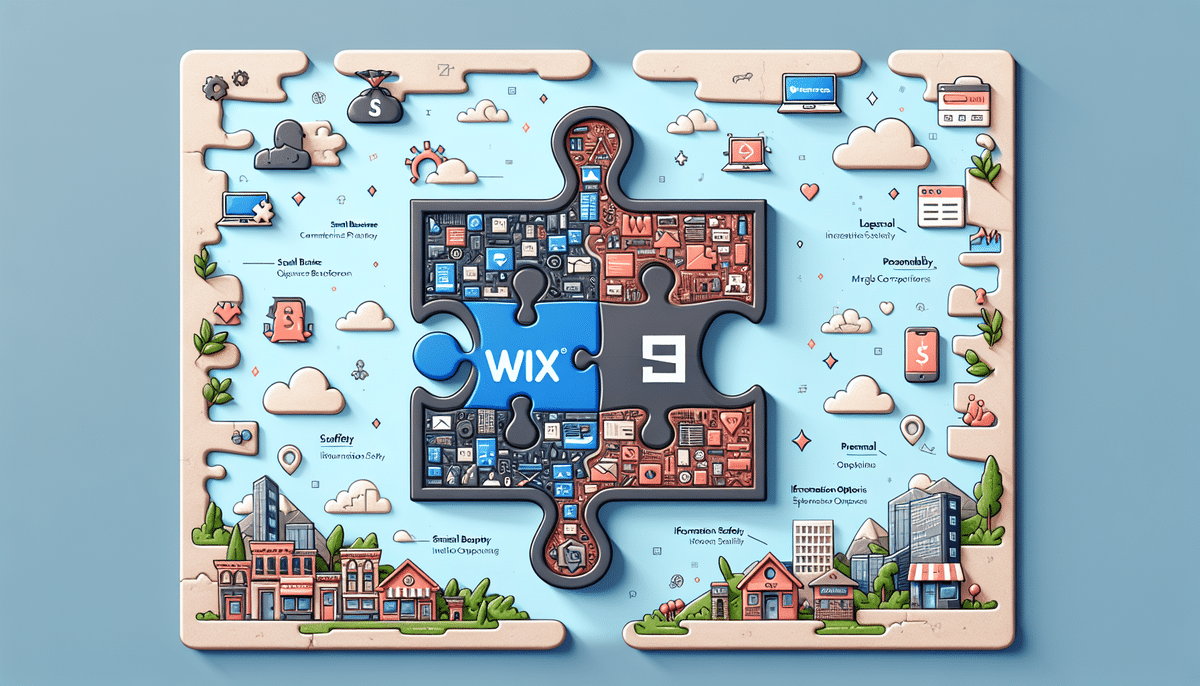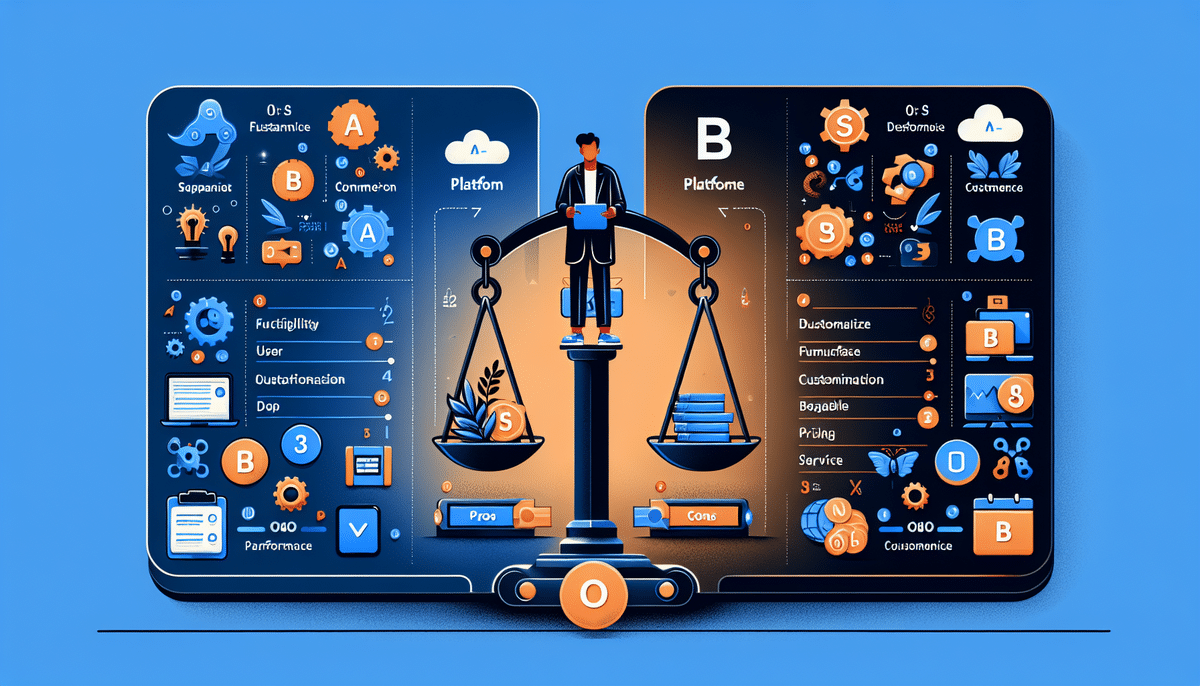Introduction to eBay and Square Online
In the rapidly evolving world of e-commerce, choosing the right platform is crucial for the success of your online business. eBay and Square Online are two prominent players in the market, each offering unique features and benefits. This comprehensive comparison will help you understand the strengths and weaknesses of both platforms, enabling you to make an informed decision tailored to your business needs.
Comparing Features and Functionality
Pros and Cons of Selling on eBay
eBay is a veteran in the e-commerce space, boasting a large and diverse user base. Here are some advantages and disadvantages of using eBay for your online store:
- Massive User Base: With over 185 million active buyers, eBay offers unparalleled access to a global audience.1
- Ease of Use: Setting up an eBay store is straightforward, making it accessible even for those without technical expertise.
- Competitive Fees: eBay's final value fees are generally lower compared to other platforms, especially for smaller transactions.
- High Competition: The platform's popularity means increased competition, which can make it challenging to stand out.
- Risk of Fraud: Online transactions carry inherent risks, including potential fraud and scams.
- Limited Branding Control: eBay emphasizes product visibility over individual seller branding, which may hinder brand development.
Pros and Cons of Using Square Online
Square Online has gained traction for its seamless integration with other Square products and user-friendly interface. Below are the benefits and potential drawbacks:
- Seamless Integration with Square Payments: If you already use Square for in-store payments, integrating Square Online can streamline your payment processes.2
- Simple Setup: Creating a Square Online store requires no coding knowledge, making it easy for beginners.
- Competitive Fees: Square Online charges a flat rate of 2.9% + 30 cents per transaction, comparable to other platforms.
- Less Established: As a newer platform, Square Online lacks the extensive user base that eBay enjoys.
- Limited Customization: While easy to use, Square Online offers fewer customization options compared to some competitors.
- Higher In-Person Transaction Fees: Using Square Online in conjunction with Square POS incurs higher fees for in-person sales.
Setting Up Your Store
How to Set Up an eBay Store
- Create an eBay account by signing up on the eBay registration page.
- Navigate to the "Sell" tab and select "Start Selling."
- Follow the prompts to set up your store, including adding product listings with detailed descriptions and high-quality images.
- Manage your sales and orders through the eBay seller dashboard.
How to Set Up a Square Online Store
- Create a Square account by visiting the Square signup page.
- Log into your Square dashboard and select "Online Store" from the menu.
- Choose from a variety of customizable templates to design your store.
- Add your products, set pricing, and configure shipping options.
- Launch your store, allowing customers to browse and make purchases directly.
Fees and Payment Options
eBay Fees and Payments
Understanding the fee structure is essential for budgeting. Here's how eBay's fees are structured:
- Final Value Fees: eBay charges a percentage of the total sale price, ranging from 2.35% to 12%, depending on the product category and sale amount.3
- Payment Methods: eBay primarily uses PayPal and also accepts major credit cards like Visa and Mastercard. Sellers can also opt for other payment methods such as bank transfers.
Square Online Fees and Payments
Square Online offers a transparent fee structure:
- Transaction Fees: A flat rate of 2.9% + 30 cents per transaction, with no monthly or setup fees.
- Payment Options: Accepts major credit cards, Apple Pay, Google Pay, and offers the option for cash on delivery for in-person pickups.
Buyer Protection and Customer Support
eBay's Buyer Protection
eBay offers a Buyer Protection policy that covers eligible purchases for up to 30 days from the delivery date. If a buyer receives a faulty product or doesn't receive their order, eBay may issue a refund.4
Square Online's Buyer Protection
Square Online provides buyer protection covering eligible purchases for up to 90 days. In cases of faulty products or non-delivery, Square may issue refunds or assist in resolving issues.5
Marketing, Shipping, and Customer Demographics
Marketing Strategies
- Targeted Keywords: Utilize relevant keywords in product descriptions to enhance searchability.
- Social Media Marketing: Promote your products on platforms like Facebook, Instagram, and Twitter to reach a broader audience.
- Promotions and Discounts: Offer special deals, discounts, or loyalty programs to attract and retain customers.
Shipping Options Comparison
Effective shipping strategies can significantly impact customer satisfaction:
- eBay: Offers automatic shipping labels, integration with major carriers like USPS and FedEx, and discounted shipping rates for sellers.6
- Square Online: Does not provide built-in shipping tools but integrates with third-party shipping platforms to manage shipping and tracking.
Understanding Customer Demographics
- eBay: Attracts a diverse customer base, including casual shoppers, collectors, and resellers, with a strong international presence.
- Square Online: Appeals to businesses already using Square's ecosystem, often small to medium-sized enterprises looking for seamless payment integration.
Conclusion: Choosing the Right Platform for Your Business
The decision between eBay and Square Online hinges on your specific business requirements and objectives. Consider the following key points:
- eBay: Best suited for businesses seeking a vast audience and lower fees per transaction, especially those selling unique or collectible items.
- Square Online: Ideal for businesses that require seamless integration with Square's payment systems and prefer a straightforward, user-friendly setup.
- Evaluate factors such as your target audience, payment processing needs, marketing strategies, and desired level of customization to determine the platform that aligns with your business goals.
By carefully assessing the features, fees, and functionalities of both platforms, you can select the one that provides the optimal foundation for your e-commerce success.
Final Verdict: Which Platform Comes Out on Top?
There is no one-size-fits-all answer when it comes to choosing between eBay and Square Online. Both platforms offer substantial benefits but cater to different business models and needs. eBay excels in providing access to a large, global marketplace, making it suitable for sellers aiming for wide reach and higher sales volume. Conversely, Square Online offers a cohesive solution for businesses seeking simplicity and integration with in-person sales systems. Ultimately, the right choice depends on your unique business objectives and operational preferences.






















